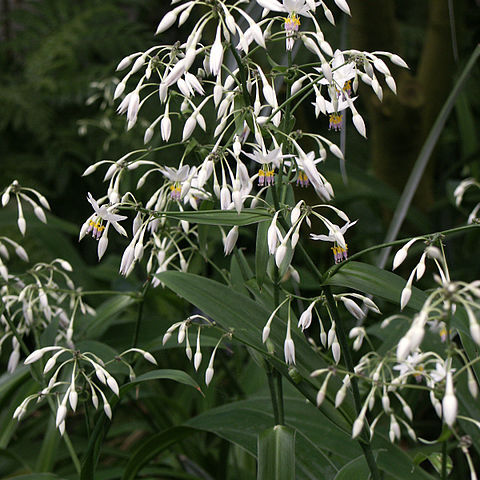Perennial herbs; roots with stalked or sessile tubers. Leaves prostrate to erect, often withering early; leaf fibres from previous seasons often present. Inflorescence scapose, racemose or paniculate. Flowers bisexual, actinomorphic, 1 to c. 9 per node, sometimes secund; pedicels spreading to nodding, usually articulate. Perianth segments 6, free, rotate to reflexed, pale blue, purple or white. Sepals narrow, 3–5-veined. Petals elliptic to circular. Stamens 6; anthers linear, sometimes recurved after shedding pollen, shorter than filaments, dehiscing by longitudinal slits, introrse to latrorse; filaments hirsute. Ovary superior; locules 3; ovules to 5 per locule; placentation axile. Fruit a loculicidal capsule, naked or enclosed by perianth. Seeds spherical to angular, black. [This description from the Arthropodium treatment in the Flora of Australia Volume 45 (Brittan 1987: 341) requires revision as it excludes A. fimbriatum and A. strictum which were treated under Dichopogon in the Flora-Editor, 31 May 2022.]

